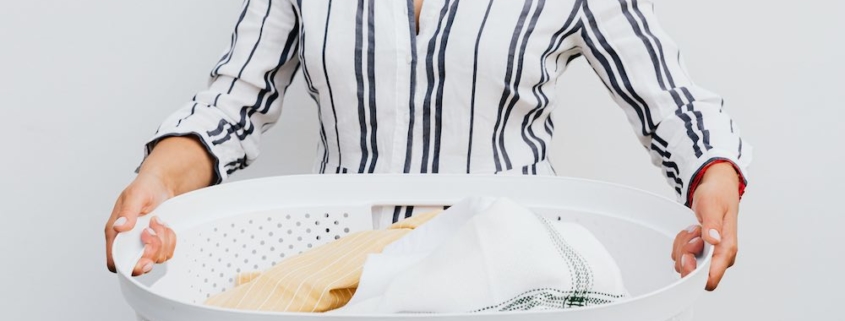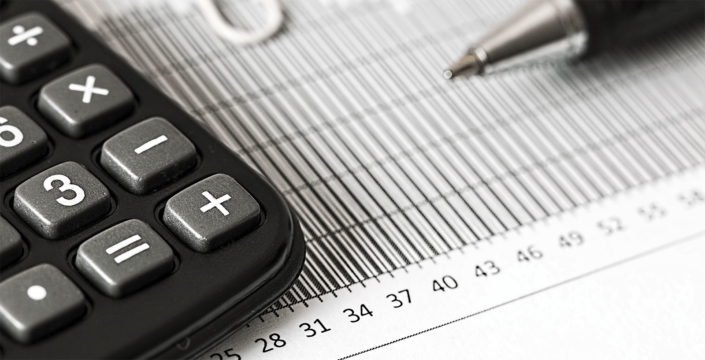Blog | All Posts | All Topics
How Much Can You Claim for Laundry and Clothing?
It’s a question we’ve all asked in our lives when doing our first tax return. Looking down the list of tax deductible expenses your eyes are instantly drawn to it—Uniform & Laundry Expenses. If you’re living at home, you’re most likely outsourcing your laundry to your parents. But as most of us have done, you really want to know if you can claim anything to maximise your return.
Luckily the answer is yes in many circumstances. In Australia, you can get a tax deduction for work clothing and laundry expenses. However, it has to meet particular requirements to qualify as work-related clothing. It can be difficult to navigate all the guidelines, so we commonly get questions like:
- Can I claim work uniforms on taxes?
- How much can I claim for laundry expenses?
- Is dry cleaning and clothing repair deductible?
In this guide, we’ll dive into work-related clothing and laundry expenses. We’ll also outline what qualifies for a deduction, how much you can claim for laundry, and more.
What Can You Claim as a Laundry Expense?
For taxation purposes, clothing and laundry expenses refer to the cost of buying, repairing, and cleaning work-related gear (garments and footwear).
According to the Australian Taxation Office (ATO), you can claim any expenses you incur to clean specific work clothing. Mainly, the deduction includes the cost of washing, drying, and ironing the clothes. However, the expense is not allowable if the employer launders the clothes for you or reimburses for the cost incurred.
The amount you can claim depends on whether you launder the clothes at home, at a laundromat, or at the dry cleaner (see later section for more details). In addition, any repair costs for the eligible gear are part of the deduction.
Types of Clothing You Can Claim
While taxation laws allow deductions for various categories of work-related attire, any conventional or everyday clothing you wear to work does not qualify for the laundry deduction.
Work clothing that may be eligible falls into four categories.
- Occupation-specific clothing
- Protective clothing
- Compulsory uniforms
- Non-compulsory uniforms
Occupation-Specific Clothing
Occupation-specific clothing refers to work attire that specifically identifies you with a particular profession. These are mainly distinct uniforms that employees would not wear in everyday situations other than their jobs.
For instance, let’s say your business’ dress policy requires employees to don navy blue suits and light blue shirts and blouses. You cannot claim the cost of purchase and maintenance as a tax deduction under occupation-specific clothing since the attire can be worn in multiple professions.
However, a nurse or doctor who wears scrubs may claim laundry expenses since they are unique to their occupation. (They may also be able to claim non-slip shoes as protective clothing.)
Examples of Occupation-Specific Clothing
- Chequered pants of a chef
- Judge’s robe
- Nurse and doctor scrubs
Generally, any dresses, jackets, blouses, skirts, pants, and other items of clothing that are worn distinctly by members of a specific profession could qualify.
Protective clothing
Protective clothing is any attire worn during work to protect you from risks (injuries, illnesses, etc.) or protect the clothes from damage. In other words, the nature of your work requires you to wear them. According to the ATO, the items must have protective features and functions to qualify for deductions.
However, they must not be everyday wear. Even if they have protective features and can be used for everyday wear, you cannot claim laundry expenses on them. For example, a building site worker who wears a long-sleeved shirt to protect their arms from abrasions, may not claim the shirt.
Examples of Protective Clothing
- Fire-resistant clothing
- Aprons
- Sun protection clothing
- Smocks
- Safety-colored vests
- Non-slip nurse’s shoes
- Overalls
- Boiler suit
- Safety boots
- Goggles
Compulsory Work Uniform
Compulsory work uniform refers to attire that is mandatory to wear while on duty. Often your employer has a clearly defined work policy in place, making it mandatory for you to wear the particular attire while on duty.
The ATO classifies compulsory work uniform as attire that is:
- Specific to your organisation
- Used to identify the products or services your organisation offers
However, if your employer requires you to wear a certain type of clothing, which can double up as conventional clothing, you cannot claim expenses. Unbranded black pants and white shirts worn by hotel staff would not qualify as an expense.
Examples of compulsory work uniforms
- Police officers’ uniform
- Military personnel uniform
- Airline staff uniform
- Nurses’ uniform
- Embroidered supermarket staff uniform
Non-Compulsory Work Uniform
Non-compulsory work uniform refers to employee work gear that’s not mandatory to wear at work. Most non-compulsory work uniforms do not qualify for a deduction, with one exception.
To qualify for laundry expense deduction, the employer must register the design with the Textile, Clothing and Footwear (TCF) Corporatewear Register. Some key elements required for registration include identifiers, patterns and colours.
Example of Non-Compulsory Work Uniform
- A bus company registered employee uniform that’s not compulsory for the employees to wear to work
Note that you cannot claim a single item, like a jacket. The clothing must be a complete outfit such as a:
- Dress
- Skirt and blouse
- Trouser and shirt
- Suit
How Much Can You Claim for Laundry?
As earlier mentioned, if your employer does your laundry, you cannot claim the expense. The same applies if they reimburse for the cost you incur.
However, if you did the laundry either at home, at the laundromat, or dry cleaner, you can make the deductions against your taxable income as follows:
At Home Laundry
- $1 per load (eligible clothing)
- 50c per load (if the load contains eligible clothing plus personal items)
At Laundromat
- $1 per load (eligible clothing)
- 50c per load (if the load contains eligible clothing plus personal items)
Dry Cleaning and Repairs
- The entire expense paid
Note that the deductions are allowable even if an employer pays you a laundry allowance.
How to Claim Laundry Expenses
To claim laundry expense on your tax return, the ATO requires you to provide evidence of the expense if it exceeds $150 per year.
If you’re doing the laundry at home, you should keep a diary of the number of loads you washed during the year. But if you took the laundry for dry cleaning, you should provide a record of the receipts and invoices. However, you can claim the expense without supplying evidence if the amount is less than $150.
For the repairs or dry-cleaning service, the record should contain the following details;
- Name of the service provider
- Repair/laundry date
- Details of the item repaired or laundered
- Amount paid for the service
The ATO allows you to claim laundry expenses for eligible work-related clothing. They categorise the eligible items into occupation-specific clothing, protective clothing, compulsory work uniforms, and registered non-compulsory work uniform.
If you’re doing the laundry at home or the laundromat, you can claim $1 per load or $ 50c if you launder the clothing alongside other items.
For repairs and dry cleaning, you can claim the entire expense. To qualify for the deduction, you must provide evidence of the costs if they exceed $150 per year.
Visory can help you maintain your business records and have them organised and ready when it comes time to lodge your taxes. Contact us today and learn how we can help get your books in order.







